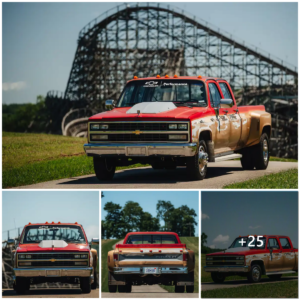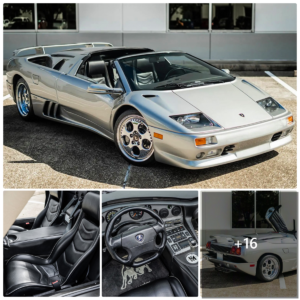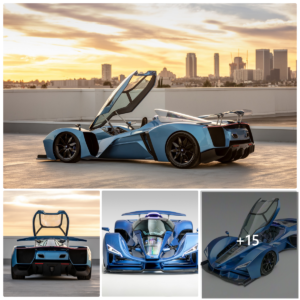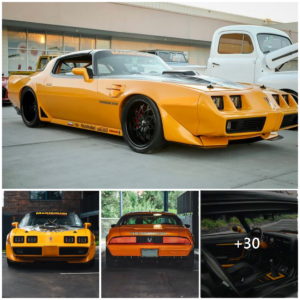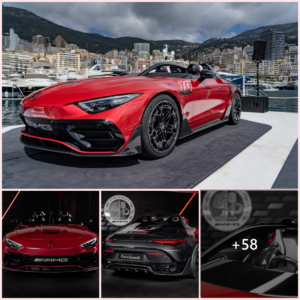This 1936 Ford coupe was found in a barn gone missing


“A few years later, a friend asked me to come see a car he had just bought,” Foster recalls. During the transport, he saw the 1936 in the warehouse. “I’m about to faint!” But fortunately, the car was rougher than expected, luckily it motivated the seller and brought the car within John’s reach. He got a very favorable deal.
After a two-year hiatus while completing two other cars, John and his friends separated the body from the chassis. He boxed up the rails and installed the IFS Fabrication Fatman with dropped spindles and an 11-inch brake adapter. John swapped the rear suspension for a set of parallel leaves and anti-roll bars from Chassis Engineering. It rides on a Granada axis. He corrects his posture with 2-inch blocks. The coupe rolls on Vintiques Gennie 15×6 and 15×7 wheels. They wore Coker’s American Classic radial watches, 165R15 and 235/75R15 respectively.

John modified the X member to fit the 4R70W. The transmission is part of a larger powertrain package from the 1998 Mercury Mountaineer. Late-model Fordophiles will recognize its engine for the famous GT40P head and Explorer intake, features that keep the car going fast that Ford has equipped on production models. But the Ford engine was also unsuitable for early cars that didn’t work; John performed this trick by bypassing the firewall and using a Flex-a-lite electric fan. It mounts to a Walker Z-series radiator.

With its fast-accelerating roller cam, large ports and small bore, the GT40 series engine is essentially an updated version of the Mustang’s 5.0 HO engine. So John largely left this part alone, only changing the EGR (removed it), the manifold (to a 70mm throttle body and to match the car) and the Ford Racing front end (mainly to match the chassis ). “Switching to fuel injection was a big step forward in my world of hot racing,” John admits. “I usually get stuck with single or multiple carb setups.” More on this later. Jenkins Fab Shop in Pasco fabricated a 2-1/4 bent shaft exhaust and Flowmaster muffler. Six states (also in Pasco) made steel drive shafts.
David Stands-Perry disposed of the body in his Kennewick store. “To say the body was in rough shape would be an understatement,” says John. Eastern Washington is not paved with salt, however, rural Washington is also not paved with as many roads. The entire body was completely naked before being taken care of by Stands-Perry. He welded the front fender seams and lowered the headlight brackets. He then cut the top 2-3/8 inches in the front and 2-1/2 inches in the back.
Rootlieb built the hood with 1934-style louvers and Don Stark Grille Art did the nose to resemble the 1937s. Headlights, are 1938 Buick. The colors, believe it or not, are team colors Peterbilt: Rad Red Pearl. “Mopar George” Kremposki shot the PPG mixture in Burbank.
The Glide chair is a slimmer, adjustable alternative to bulky chairs. Jamie Rice at Jamie’s Upholstery in Yakima, Washington, fabricated the interior panels and covered everything in a caramel color combination of leather and vinyl. We have to admit that the gauge cluster is a bit out of place in a more traditionally themed car, but it exists for a reason. In fact, he tried his best to solve that problem.
To understand why you have to know about the car’s electrical system: It’s the Mountaineer’s. “When it came time to wire up, I was introduced to another racer who had just created a custom EFI system for a 1973 F250,” John recalls. The Mountaineer’s fuse panel, ECU and distribution module are located in the ventilated compartment behind the seat. And the reason for the Mountaineer gauge panel? “(It) probably has all the special functions of the original donor car (i.e. gauges, warning lights, compass and ambient temperature)” John revealed. “In essence, you get all the benefits of a late model in a great old car!” Stands-Perry tackled the in-dash panel and fabricated the concealed extension Old Air Products Hurricane climate control system.
This work turned out to be a true labor of love and took three years to complete,” says John. Admittedly: “It was well worth the time.” You won’t hear him complaining about being the winning bidder on this deal. in the warehouse. He’s the first to admit that it was the generosity and willingness of the guy who won the car that made this project possible right from the start. Now, if the rest of us could find a way to accept such favorable conditions!

